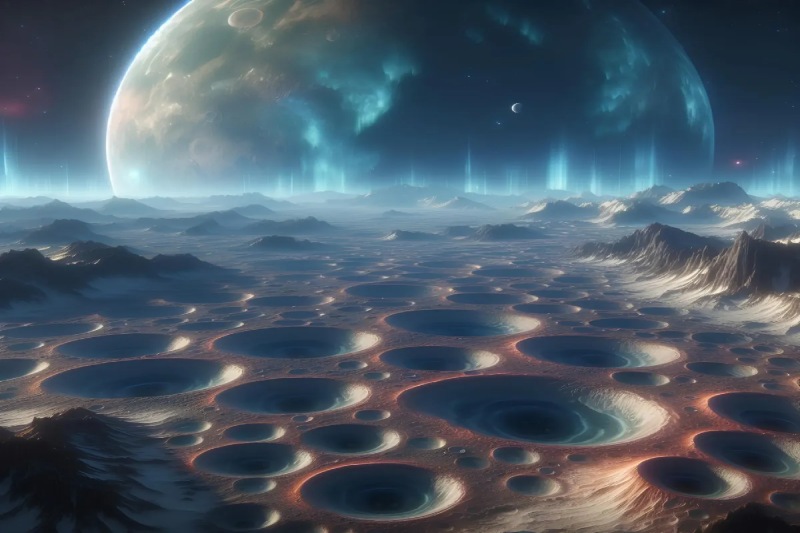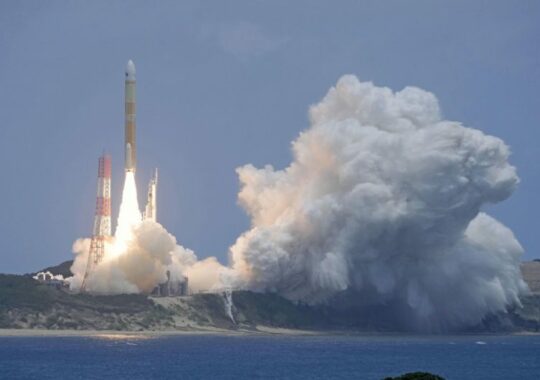Astronomers’ best chance of discovering liquid water, and possibly even life, on other planets, according to scientists at MIT, the University of Birmingham, and other places, is to search for the absence of a chemical characteristic in their atmospheres rather than its existence.
According to the researchers, a terrestrial planet’s atmosphere may indicate the presence of liquid water and maybe life if it has significantly less carbon dioxide than other planets in the same system.
Furthermore, NASA’s James Webb Space Telescope (JWST) can see this new signature. Although additional indicators of habitability have been suggested by scientists, measuring those attributes with existing technologies is difficult, if not impossible. According to the team, this new signal of comparatively reduced carbon dioxide is currently the sole indicator of habitability that can be found.
“The Holy Grail in exoplanet science is to look for habitable worlds, and the presence of life, but all the features that have been talked about so far have been beyond the reach of the newest observatories,” says Julien de Wit, assistant professor of planetary sciences at MIT. “Now we have a way to find out if there’s liquid water on another planet. And it’s something we can get to in the next few years.”
The results obtained will be published in Nature Astronomy. Amaury Triaud of the University of Birmingham in the United Kingdom co-led the study alongside De Wit. Prajwal Niraula, Ana Glidden, and Benjamin Rackham are their co-authors from MIT. Together with Frieder Klein of the Woods Hole Oceanographic Institution (WHOI), Martin Turbet of Ècole Polytechnique in France, and Franck Selsis of the Laboratoire d’astrophysique de Bordeaux, Oliver Jagoutz, Matej Peč, Janusz Petkowski, and Sara Seager.
More than a hint
Over 5,200 extrasolar planets have been found by astronomers thus far. Astronomers can now determine a planet’s distance from its star and the duration of its orbit directly with telescopes. Scientists can determine whether a planet is inside a habitable zone with the use of such measurements. However, there is currently no direct method for determining if a planet is habitable—that is, whether liquid water exists on its surface.
By looking for “glints”—short bursts of sunshine that reflect off liquid surfaces—scientists can find evidence of liquid oceans all throughout our solar system. For example, these glints, or specular reflections, have been seen on Titan, Saturn’s largest moon, which has contributed to the confirmation of the moon’s enormous lakes.
However, existing technology are not capable of detecting a comparable gleam in distant planets. However, de Wit and his associates discovered another habitable feature nearby that might be observable in other planets.
“An idea came to us, by looking at what’s going on with the terrestrial planets in our own system,” Triaud says.
There are commonalities between Venus, Earth, and Mars: they are all rocky planets that live in rather moderate solar regions. Of the three planets, only Earth has liquid water on it at the moment. The scientists also observed another clear difference: the amount of carbon dioxide in Earth’s atmosphere is far lower.
“We assume that these planets were created in a similar fashion, and if we see one planet with much less carbon now, it must have gone somewhere,” Triaud says. “The only process that could remove that much carbon from an atmosphere is a strong water cycle involving oceans of liquid water.”
It is true that the oceans have been a significant and ongoing source of carbon dioxide absorption. The seas have absorbed a significant amount of carbon dioxide over hundreds of millions of years—nearly as much as is still present in Venus’ atmosphere today. In comparison to its planetary neighbors, Earth’s atmosphere has experienced a large depletion of carbon dioxide due to this planetary-scale phenomenon.
“On Earth, much of the atmospheric carbon dioxide has been sequestered in seawater and solid rock over geological timescales, which has helped to regulate climate and habitability for billions of years,” says study co-author Frieder Klein.
The scientists reasoned that if a distant planet’s carbon dioxide level were to decrease similarly to that of its neighbors, this would be a trustworthy indicator of liquid seas and surface life.
“After reviewing extensively the literature of many fields from biology, to chemistry, and even carbon sequestration in the context of climate change, we believe that indeed if we detect carbon depletion, it has a good chance of being a strong sign of liquid water and/or life,” de Wit says.
A guide to life
The team outlines a method for finding habitable planets by looking for an indication of carbon dioxide depletion in their study. An optimal search scenario for “peas-in-a-pod” systems would involve several identically sized terrestrial planets orbiting in close proximity to one another, akin to the solar system we live in. The team suggests that the first step be to simply seek for the presence of carbon dioxide, which is expected to predominate in most planetary atmospheres, in order to confirm that the planets have atmospheres.
“Carbon dioxide is a very strong absorber in the infrared, and can be easily detected in the atmospheres of exoplanets,” de Wit explains. “A signal of carbon dioxide can then reveal the presence of exoplanet atmospheres.”
Astronomers can measure each planet’s carbon dioxide concentration to check if one has noticeably less than the others after establishing that several planets in a system have atmospheres. If this is the case, the planet is probably habitable, which means that large amounts of liquid water are present on its surface.
However, the presence of livable circumstances does not prove the existence of life on a planet. The group suggests that in order to determine whether life is genuinely present on a planet, astronomers should search for ozone, another component of the atmosphere.
The researchers observe that while not nearly as much as the oceans, plants and some bacteria on Earth do contribute to the removal of carbon dioxide. However, during this process, the lifeforms release oxygen, which combines with photons from the sun to create ozone, a chemical that is far simpler to identify than oxygen.
According to the researchers, a planet is probably inhabited if its atmosphere exhibits both ozone depletion and reduced carbon dioxide levels.
“If we see ozone, chances are pretty high that it’s connected to carbon dioxide being consumed by life,” Triaud says. “And if it’s life, it’s glorious life. It would not be just a few bacteria. It would be a planetary-scale biomass that’s able to process a huge amount of carbon, and interact with it.”
The group predicts that NASA’s James Webb Space Telescope will be able to monitor ozone and carbon dioxide in close-by multiplanet systems like TRAPPIST-1, a seven-planet system located only 40 light years from Earth that orbits a brilliant star.
“TRAPPIST-1 is one of only a handful of systems where we could do terrestrial atmospheric studies with JWST,” de Wit says. “Now we have a roadmap for finding habitable planets. If we all work together, paradigm-shifting discoveries could be done within the next few years.”





